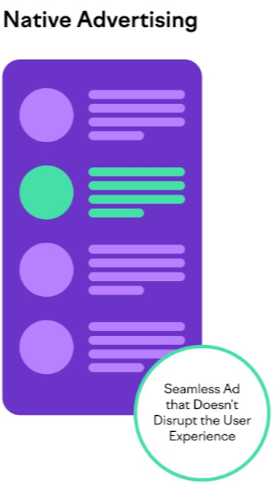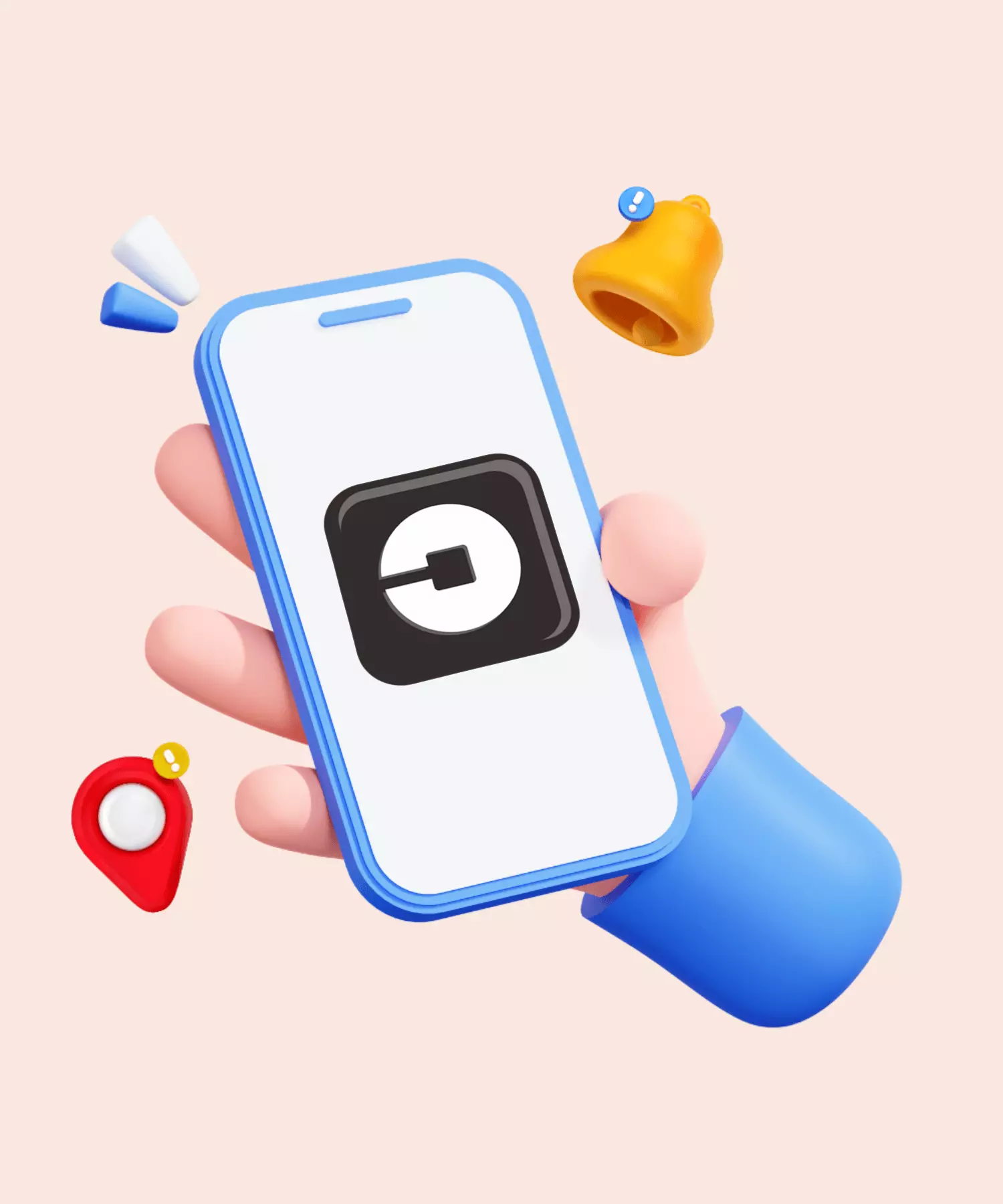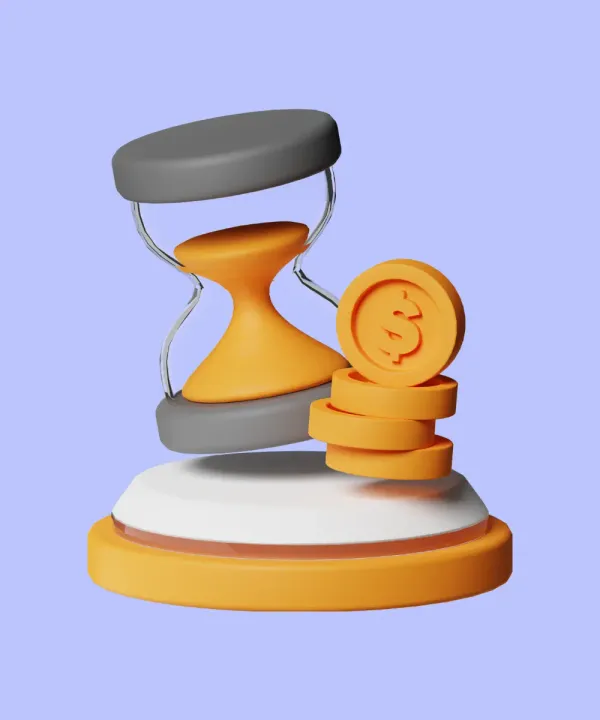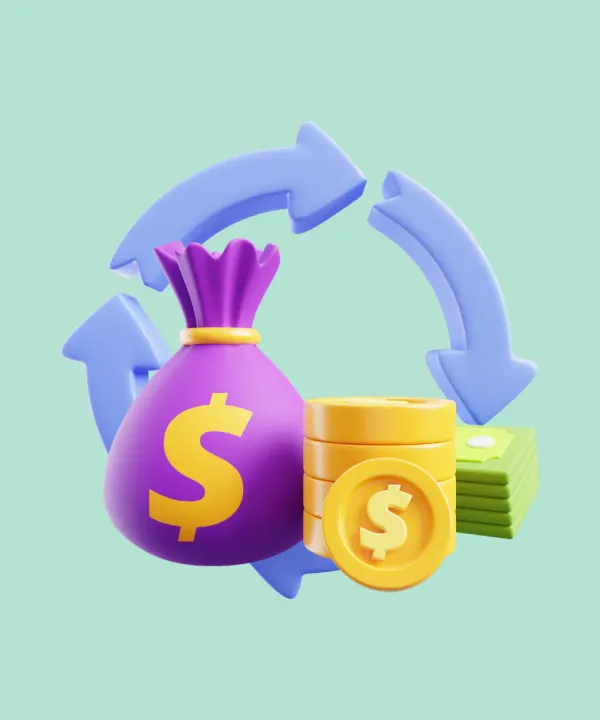Introduction
Free apps, although free to download and use, can be highly profitable through various monetization strategies. In this guide, we will explore the different ways free apps make money, covering a range of strategies from advertising and freemium to data monetization and donations. Understanding these methods, businesses can better navigate the app development and maintenance process, ensuring long-term profitability and success.
Paid vs. Free Apps
In many cases, it’s even more challenging for app owners to earn money from paid mobile apps. Consider this:
Now, picture yourself in the shoes of app users. With millions of options available, would you choose to pay for an app if there’s a free alternative? Probably not.
Fortunately, charging an upfront download fee is just one of many ways to make money from mobile apps. There are other means to generate revenue while keeping your app free — and we'll gladly share the most effective ones in this article. So, read on.
But first, let’s take a closer look at the difference of paid and free apps. Each model has its own advantages and disadvantages, and the choice between them depends on the app's purpose, target audience, and market conditions.
| Aspect | Paid Apps | Free Apps |
|---|---|---|
| Cost to Users | Upfront purchase price | Free to download |
| Revenue Model | Direct sales | Advertising, in-app purchases, subscriptions |
| User Reach | Potentially limited due to cost barrier | Higher due to no cost barrier |
| Monetization Flexibility | Less flexible | Highly flexible with multiple revenue streams |
| User Perception | Often perceived as higher quality | May need to overcome "free" stigma |
| Maintenance and Updates | Funded by initial sales | Funded by ongoing revenue streams |
| Market Saturation | Less competitive | Highly competitive |
| Examples | Productivity apps like "Notability" | Social media apps like "Instagram" |
Advertising Options
In-app advertisements

In-app advertisements are one of the most common ways free apps generate revenue. There are several types of in-app ads, each with unique benefits and drawbacks. Below, we'll explore each type with real-world examples to illustrate their effectiveness.
- Banner ads: Banner ads are small, rectangular advertisements that typically appear at the top or bottom of the app interface. They are relatively non-intrusive but can be ignored by users due to their static nature. Many free mobile games, such as "Candy Crush Saga," use banner ads at the bottom of the screen during gameplay. These ads are small enough not to disrupt the game but are still visible to users.

- Interstitial ads: Interstitial ads are full-screen ads that cover the app's interface. These ads appear at natural transition points, such as between game levels or during app load screens. While they can capture users' full attention, they can also be disruptive if not timed correctly. For example, "Words with Friends" uses interstitial ads between turns. After a player makes a move, an ad might appear before the next turn, ensuring the player views the ad during a natural break in the game.

- Native ads: Native ads blend seamlessly into the app’s content, matching the look and feel of the app. These ads are less intrusive and often more effective because they provide a better user experience by being less distinguishable from regular content. The social media platform "Instagram" uses native ads in the form of sponsored posts that appear in users' feeds. These ads look like regular posts, making them less disruptive and more engaging.

- Video ads
- Rewarded videos: Rewarded videos offer users incentives, such as in-game currency or extra features, in exchange for watching an advertisement. This type of ad is popular in gaming apps as it provides value to the user while generating revenue for the developer. As an example, "Angry Birds 2" allows players to watch a rewarded video to gain extra lives or power-ups. This not only enhances the gameplay experience for users but also increases ad engagement.
- Non-rewarded videos: Non-rewarded videos do not offer any incentives to users for watching. These ads rely on user engagement and can be less effective than rewarded videos due to the lack of direct benefit to the user. Some news apps, like "CNN," incorporate non-rewarded video ads that play before accessing certain news clips. Users watch these videos to view the content but receive no direct reward for their time.
Affiliate marketing
Affiliate marketing involves promoting third-party products or services within the app. Apps earn commissions through affiliate links and partnerships when users make purchases or engage with the promoted content. For example, travel apps like "TripAdvisor" often feature affiliate links for hotel bookings, flights, and travel insurance. When users book through these links, TripAdvisor earns a commission from the service provider.
Freemium Model
Subscription-based options
- Recurring revenue: Subscription models provide apps with a steady and predictable revenue stream by charging users a recurring fee, typically monthly or yearly. This financial stability allows developers to continuously improve and update the app. As an example, Calm offers both monthly and yearly subscription plans. Users can access premium content like guided meditations, sleep stories, and masterclasses. The yearly plan provides a discount, encouraging long-term commitment and providing a steady revenue stream.
- Content access: Subscription models often provide exclusive access to premium content, attracting users willing to pay for a superior experience. News and magazine apps monetize high-quality journalism and exclusive content through subscriptions, offering premium articles, ad-free reading, and special editions. For example, Medium provides a subscription service that gives users access to premium articles from various writers and publications. Subscribers enjoy an ad-free experience and exclusive content, supporting independent writers and high-quality content.
- Multi-tiered subscriptions: Some apps offer different levels of access and benefits based on the subscription tier, allowing users to choose the level of service that best meets their needs and budget. For instance, LinkedIn Premium offers several tiers, including Career, Business, Sales Navigator, and Recruiter Lite. Each tier provides features tailored to specific user needs, such as enhanced profile visibility, business insights, and advanced search tools.
- Hybrid subscription models: Hybrid models combine subscriptions with other monetization strategies, such as in-app purchases and advertising, to maximize revenue. As a real-world example, Hulu combines subscriptions with advertising, offering plans with varying levels of ad exposure. Users can choose an ad-supported plan at a lower cost or an ad-free plan at a higher cost. This model caters to different user preferences while maximizing revenue potential.
In-app purchases
Virtual Goods: Virtual goods are items that users can purchase within an app, and they can be highly lucrative in both gaming and non-gaming apps.
- Gaming: Virtual Currency, Upgrades, and Items: Users can purchase virtual currency, upgrades, and items to enhance their gameplay. This model is effective in generating revenue from dedicated players willing to pay for a better gaming experience. For example, Fortnite allows players to buy V-Bucks, a virtual currency used to purchase in-game items such as skins, emotes, and battle passes. This generates a steady revenue stream and keeps players engaged with new content.
- Non-gaming: extra features, content, and subscriptions: In-app purchases can include extra features, additional content, or subscription services that enhance the user experience and provide ongoing revenue. Duolingo offers a premium subscription called Duolingo Plus, which includes features like an ad-free experience, offline access, and progress tracking. Users serious about language learning are likely to invest in these premium features.
Consumable vs. non-consumable purchases: In-app purchases can be categorized into consumable and non-consumable purchases, each serving different user needs and generating revenue in distinct ways.
- Consumable purchases: These are items that users buy and use within the app, which need to be repurchased after use. This is common in gaming apps and other apps offering one-time use items. In Candy Crush Saga, players can buy boosters and extra lives. Once used, these items need to be repurchased, providing a continuous revenue stream for developers.
- Non-consumable purchases: These are items that users buy once and retain access to permanently, such as premium features, content, or tools that enhance the app experience. The productivity app Notability offers a one-time purchase for additional features like handwriting recognition and additional note templates. Once purchased, users have permanent access to these features, adding long-term value to their app usage.
Sponsorship and Partnerships
- Sponsored content: Integrating branded content within the app allows for seamless sponsorships. Sponsored content can be in the form of articles, videos, or interactive elements that promote a brand while providing value to users. The fitness app "Strava" includes sponsored challenges from brands like Nike and Under Armour. Users participate in these challenges to win rewards, increasing brand engagement and visibility.
- Co-branding and partnerships: Collaboration with other brands or apps can be mutually beneficial. Co-branding and partnerships can expand an app’s reach, attract new users, and create new revenue opportunities. "Nike Run Club" partners with Apple to integrate the app with the Apple Watch, providing users with exclusive features and promotions. This partnership enhances the user experience and drives brand loyalty for both companies.
Data Monetization
Data monetization involves leveraging user data to generate revenue. Free apps use this strategy in several ways:
- Apps collect and analyze data on user behavior, preferences, and trends to improve functionality and personalize experiences. This helps in making informed updates and introducing new features that increase user satisfaction.
- Anonymized user data is sold to third parties for market research. Companies use this data to understand consumer behavior and market trends, aiding in product development and marketing strategies.
- Collected data is used to deliver personalized ads, increasing their relevance and effectiveness. This results in higher engagement rates and more advertising revenue.
For example, Facebook collects extensive data from user interactions to understand interests, behaviors, and demographics. This information is used to deliver highly targeted ads, significantly boosting their ad revenue through effective data monetization.
Transaction Fees
Some free apps, like marketplaces, generate revenue by charging fees on transactions between users and sellers. This model is common in e-commerce and service-based apps:
- Marketplace apps: Marketplace apps, such as e-commerce platforms, earn revenue through commissions on sales. When a transaction is completed, the app takes a percentage of the sale as a fee. For instance, Etsy charges a commission fee on each sale made through its platform, providing a steady income stream from sellers who pay a percentage of their sales revenue.
- Service fees: Service-based apps, like ride-sharing or delivery services, charge users a fee for utilizing their platform. This fee can be a percentage of the transaction or a fixed amount. For example, Uber charges a service fee for each ride booked through the app. This fee helps cover operational costs and generates revenue.

Crowdfunding and Donations
- Crowdfunding platforms: Crowdfunding platforms like Kickstarter and Patreon enable app developers to raise funds directly from users. This model is ideal for niche apps or those with a dedicated user base. The podcast app "Overcast" used Patreon to raise funds directly from its user base, offering exclusive content and features to backers.
- Direct donations: Some apps include donation features, allowing users to contribute financially to the app’s development and maintenance. This model works well for non-profits or community-driven projects. For example, the messaging app "Signal" includes a donation feature where users can contribute to the app’s ongoing development, supporting its commitment to privacy and security.
Licensing and White Labeling
- Licensing technology: App developers can license their technology to other developers, creating a new revenue stream. This approach is common in apps with unique or innovative technology. The augmented reality (AR) technology used by "Pokémon GO" has been licensed to other developers, allowing them to incorporate AR features into their own apps.

- White label solutions: White labeling involves customizing and selling the app framework to other businesses. This model allows companies to quickly deploy branded apps without developing from scratch. The restaurant delivery app "Postmates" offers a white-label solution, enabling restaurants to use their delivery platform under their own branding.
Combinations Model
Combination models use a mix of different monetization strategies to maximize revenue potential. Free apps can combine subscriptions, in-app purchases, data monetization, and transaction fees to create multiple income streams.
For example, Amazon uses a combination model. It offers a marketplace where it charges transaction fees on sales, a subscription service with Amazon Prime, and leverages user data for targeted advertising and personalized recommendations.
The second example, it is well-known YouTube, also uses a combination model. It provides free access to content supported by ads, offers a subscription service (YouTube Premium) for ad-free viewing and additional features, and leverages user data to deliver targeted ads and personalized content recommendations. This multi-faceted approach helps YouTube generate substantial revenue from various sources.
Best Practices for Monetizing Free Apps
Successfully monetizing a free app requires a strategic approach that balances user experience with revenue generation. Here are some best practices that can help developers maximize their earnings while maintaining user satisfaction:
- Understand your audience: Knowing your target audience is crucial for choosing the right monetization strategies. Conduct market research to understand your users' preferences, behaviors, and willingness to pay. Tailor your monetization efforts to meet their needs and expectations.
- Integrate monetization seamlessly: Monetization strategies should be integrated in a way that feels natural and unobtrusive to users. Avoid aggressive advertising or intrusive in-app purchase prompts that can disrupt the user experience.
- Offer value in exchange for payments: Ensure that any paid features, content, or services provide clear value to users. Users are more likely to spend money if they perceive tangible benefits, such as enhanced functionality, exclusive content, or a better overall experience.
- Use multiple monetization strategies: Diversify your revenue streams by combining multiple monetization strategies. This approach reduces dependency on a single source of income and can help maximize overall earnings.
- Regularly update and improve the app: Continuously updating the app with new features, content, and improvements keeps users engaged and willing to spend money. Regular updates also show users that the app is actively maintained, which can enhance trust and loyalty.
- Implement free trials and introductory offers: Offering free trials or introductory offers can entice users to try premium features without initial financial commitment. Once users experience the benefits, they may be more likely to convert to paying customers.
- Leverage data for personalization: Use data analytics to personalize the user experience and monetization efforts. Personalized recommendations, targeted ads, and tailored in-app purchase offers can increase user engagement and spending.
- Maintain transparency and trust: Be transparent about monetization practices to build trust with users. Clearly communicate the costs and benefits of in-app purchases, subscriptions, and ads. Avoid deceptive practices that can lead to user dissatisfaction and churn.
- Encourage user feedback and adapt: Regularly solicit user feedback to understand their needs and preferences. Use this feedback to refine and improve monetization strategies, ensuring they align with user expectations and enhance satisfaction.
- Optimize for user retention: Focus on user retention to build a loyal user base that provides recurring revenue. Offer loyalty programs, exclusive content, and ongoing support to keep users engaged and invested in the app.
Conclusion
In conclusion, free apps can generate substantial revenue through various monetization strategies, including advertising, in-app purchases, subscriptions, sponsorships, data monetization, transaction fees, crowdfunding, donations, licensing, and white labeling. By understanding and implementing these strategies, developers can create sustainable and profitable apps.
For businesses looking to update their apps or develop new ones, leveraging these monetization models can lead to long-term success. At What the Flutter, we specialize in helping businesses navigate the complexities of app development and monetization. Contact us today to learn how we can assist in updating your app to maximize its revenue potential.













